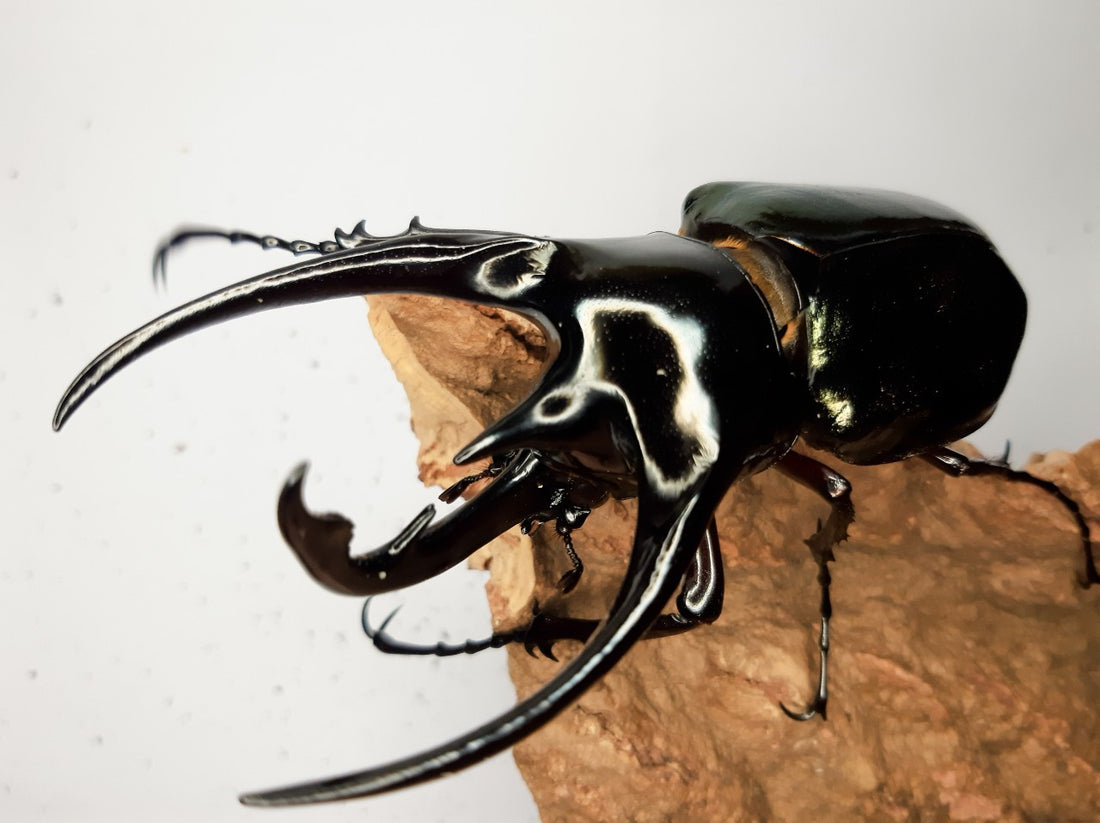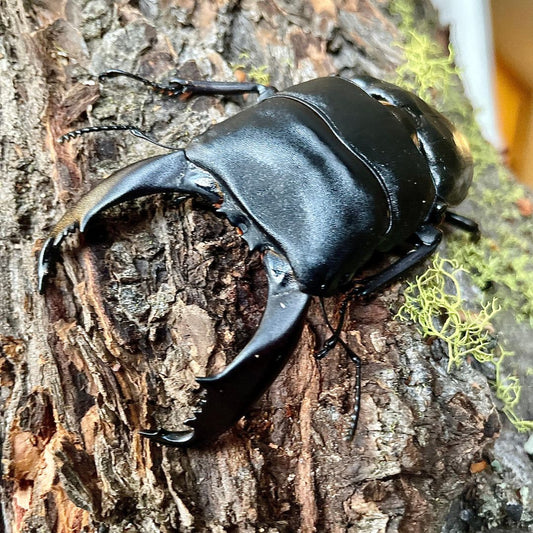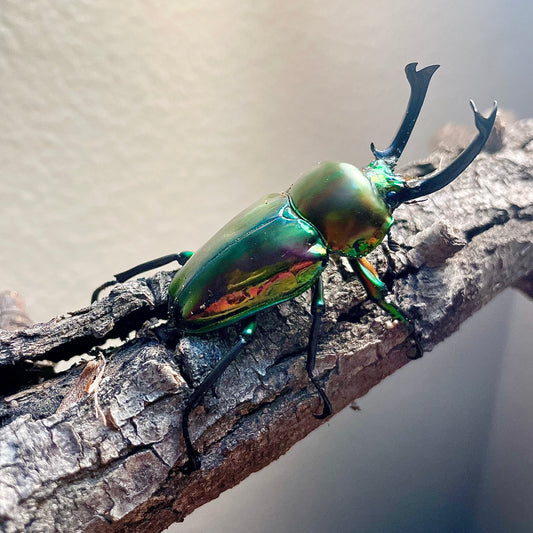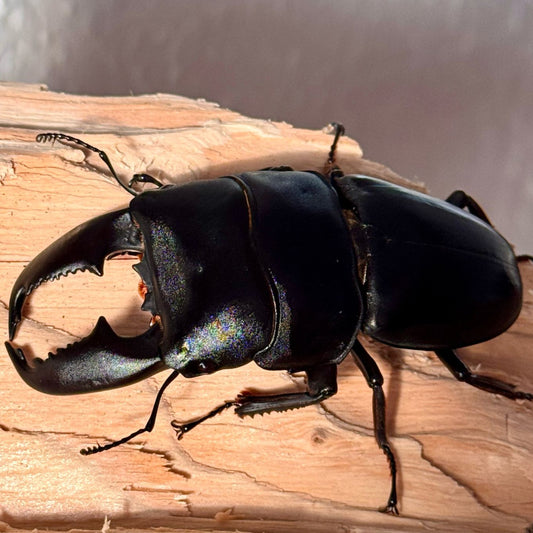Becoming a beetle rearing expert is a fascinating journey into the world of these remarkable insects. Whether you're a beginner or an experienced enthusiast, there are essential aspects to consider when caring for beetles. In this guide, we'll explore what beetles eat, temperature considerations, their unique "blood type," and the ideal living environments for these tiny wonders.
1. What Does Beetle Eat?
Beetles have diverse dietary preferences, and what they eat can vary depending on their species. Some common dietary categories include:
a. Sap and Nectar:- Many beetles, such as the Giraffe Stag Beetle, enjoy a diet of tree sap, fruits, and nectar. They're like the flower visitors of the insect world.
- Others, like the Dung Beetle, play a vital role in nature by consuming and recycling decaying organic matter, like dung. They are the clean-up crew of ecosystems.
- Predatory beetles, such as Ground Beetles, feed on other insects. They are nature's pest controllers.
Understanding the dietary requirements of your specific beetle species is crucial to ensure their health and well-being.
2. Temperature Matters
Beetles are highly sensitive to temperature, and different species have varying temperature preferences. Here's what you need to consider:
- Optimal Range: Maintain the temperature within the preferred range for your beetle species. For many species, this can be around 70-80°F (21-27°C).
- Hibernation: Some beetles require a period of hibernation during the winter months, where cooler temperatures are necessary.
- Thermoregulation: Provide opportunities for your beetles to thermoregulate, which means they can move to warmer or cooler areas within their habitat.
Beetles don't have blood as humans do, but they have a fluid called "hemolymph." Hemolymph plays a vital role in transporting nutrients and oxygen throughout their bodies. As a beetle rearing expert, it's important to understand that hemolymph is part of what keeps these insects healthy and functioning.
4. Living Environment
Creating the right living environment for your beetles is key to their well-being. Here are some factors to consider:
a. Substrate:- Choose a suitable substrate or habitat material based on your beetle species. This could be soil, wood, or leaf litter.
- Maintain the correct moisture level, as some beetles need more humidity than others. Mist the habitat or provide a water source as needed.
- Beetles often seek shelter during the day. Providing hiding spots like logs or bark is essential.
- Regularly clean and maintain the habitat to prevent mold and ensure a healthy environment for your beetles.
- Ensure there's enough space for your beetles to move around comfortably, and consider the social behavior of your species.
By mastering these aspects of beetle care, you'll be on your way to becoming a true beetle rearing expert. Your dedication to understanding their dietary needs, providing suitable temperatures, creating the right living environment, and even appreciating their unique "blood type" demonstrates your commitment to these incredible insects.
As you delve deeper into the world of beetles, you'll unlock the secrets of their care, and your expertise will continue to grow alongside your beetle collection.



